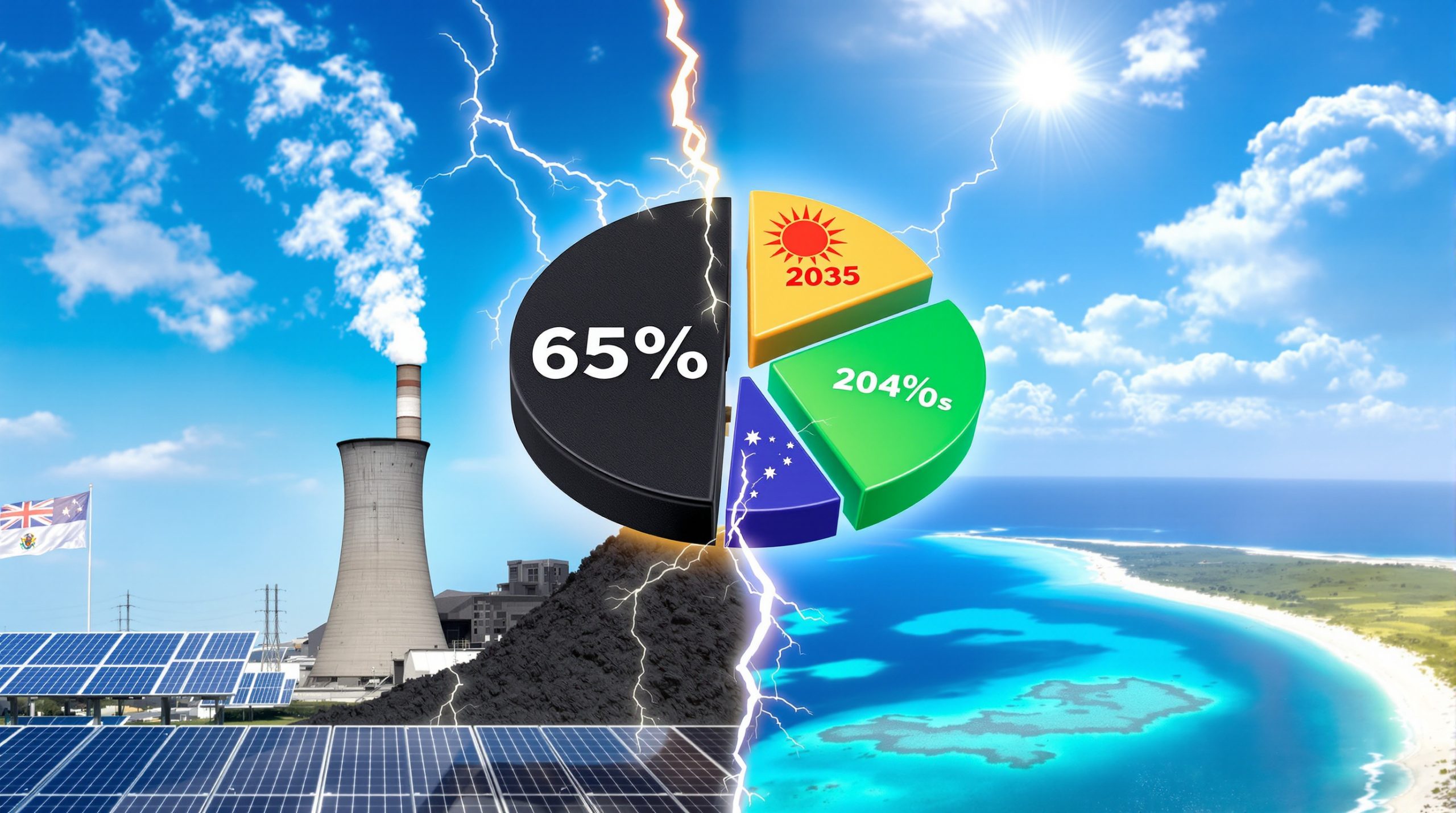How Is the US Boosting Its Strategic Uranium Reserve?
The United States is actively expanding its strategic uranium reserve to strengthen energy security, reduce dependence on Russian supplies, and support growing nuclear power generation. Energy Secretary Chris Wright recently emphasized the need for larger uranium stockpiles as part of a comprehensive strategy to revitalize America's nuclear sector amid increasing electricity demands and geopolitical tensions.
Current State of US Uranium Reserves
The US currently maintains relatively modest uranium inventories compared to international counterparts. According to International Atomic Energy Agency (IAEA) data from 2024, US nuclear operators maintain approximately 14 months of uranium supply, while European Union facilities maintain 2.5 years of reserves, and Chinese nuclear plants hold stockpiles equivalent to 12 years of current generation.
This disparity highlights the strategic vulnerability in America's nuclear fuel supply chain, particularly as the country seeks to expand nuclear capacity while reducing reliance on foreign sources. The current administration is working to address this gap through a multi-faceted approach to uranium stockpiling and domestic production.
Why Is Uranium Reserve Expansion Critical for US Energy Security?
Reducing Russian Supply Dependence
The US nuclear sector faces significant exposure to Russian uranium supplies. Russia currently provides approximately 25% of enriched uranium for US reactors, which fuels roughly 5% of total US electricity generation. This dependency creates a strategic vulnerability that has become increasingly problematic amid deteriorating international relations.
In May 2024, legislation was signed requiring utilities to phase out Russian uranium by 2028, creating an urgent timeline for developing alternative supply chains. The ban on Russian uranium has already prompted Russia to implement temporary export limitations in retaliation, underscoring the potential disruption risks to the US energy sector without adequate reserves.
Supporting Nuclear Power's Growing Role
The strategic reserve expansion aligns with broader nuclear energy goals within the United States. Nuclear currently generates about 20% of US electricity through its fleet of 94 operational reactors, which require consistent fuel supplies to maintain reliability.
Electrification trends across transportation, manufacturing, and other sectors are increasing overall power demand, making nuclear's baseload capability more valuable. Additionally, the deployment of advanced reactor designs requires specialized fuel types, adding another dimension to reserve planning requirements.
What Steps Is the US Taking to Expand Uranium Reserves?
Historical Reserve Development
The strategic uranium reserve concept has evolved across administrations with bipartisan support. It was initially proposed in 2020 with a $150 million funding request, though Congress ultimately approved $75 million for initial purchases.
The Energy Department awarded contracts to domestic producers in 2022, with companies like Energy Fuels and Uranium Energy Corp supplying initial inventory for the strategic reserve. These early purchases helped establish the procurement mechanisms and supply relationships necessary for larger-scale expansion.
Current Expansion Initiatives
The current administration is pursuing multiple approaches to strengthen uranium reserves. These include increasing physical uranium stockpiles, developing domestic enrichment capabilities, establishing public-private partnerships, and creating specialized reserves for advanced reactor fuels.
Energy Secretary Wright has described the US as "furiously at work" in efforts to remake nuclear fuel supply chains. The administration is focusing on creating a resilient system that can withstand uranium market volatility and geopolitical pressures while supporting both existing reactors and new deployments.
Domestic Production Enhancement
Strengthening US uranium mining and processing is central to the strategy. The administration is encouraging private investment in mining operations, supporting permit streamlining for new projects, providing financial incentives for production expansion, and developing workforce capacity in uranium mining regions.
Wyoming, Utah, Texas, and other states with uranium resources are seeing renewed interest in exploration and development. Modern mining techniques, including in-situ recovery methods, are being implemented to minimize environmental impacts while maximizing production efficiency. However, challenges remain, as seen with the recent Paladin uranium mining halt in Namibia, which highlights the global nature of uranium supply issues.
How Will Enhanced Enrichment Capabilities Support the Reserve?
Current Enrichment Infrastructure
The US faces significant limitations in domestic enrichment capacity, with only two commercial enrichment facilities currently operating. Urenco's New Mexico facility produces conventional reactor fuel, while Centrus Energy in Ohio recently began producing higher-enrichment fuel needed for advanced reactor designs.
This limited capacity poses challenges for meeting future nuclear fuel needs, particularly as the industry moves toward advanced reactor designs requiring specialized fuel formulations. Expanding enrichment infrastructure is therefore a critical component of the overall reserve strategy.
Private Sector Involvement
The administration is actively encouraging private investment in uranium enrichment technologies. Energy Secretary Wright highlighted General Matter Corp, founded by entrepreneur Peter Thiel, as an example of private innovation in this sector. This represents a shift from historical patterns, as nuclear fuel production has typically been dominated by state-controlled entities due to non-proliferation concerns.
Wright emphasized that private capital involvement is "key for efficiency and innovation and pace," noting that market-driven approaches can accelerate technology development and implementation. According to recent reports, this public-private collaboration model aims to combine government stability with private sector agility.
Advanced Reactor Fuel Requirements
Next-generation reactors present unique fuel challenges that must be addressed in reserve planning. Many advanced designs require higher enrichment levels than traditional light-water reactors, necessitating specialized production capabilities.
The first advanced reactor models are expected to undergo testing by next year, creating urgency for developing appropriate fuel supplies. Strategic reserves must account for these specialized needs to support innovation while maintaining energy security.
What Timeline Is Expected for Reserve Expansion?
Near-Term Objectives (2025-2027)
Initial expansion efforts focus on immediate security needs in the coming years. These include increasing conventional uranium stockpiles, developing preliminary enrichment capacity, establishing supply agreements with allied nations, and creating buffer against potential supply disruptions.
The administration has prioritized creating sufficient inventory to manage the transition away from Russian supplies without disrupting nuclear plant operations. This requires careful coordination between purchasing strategies, domestic production ramp-up, and international supply arrangements.
Medium-Term Goals (2028-2030)
As Russian supply restrictions take full effect, enhanced capabilities become crucial for maintaining energy security. The complete transition away from Russian uranium must be achieved by the 2028 deadline established in recent legislation.
During this period, the US aims to achieve self-sufficiency in conventional fuel production, establish robust strategic reserves for standard reactors, and develop preliminary advanced fuel stockpiles. These medium-term goals align with expected growth in nuclear generation capacity.
Long-Term Vision (2030+)
The comprehensive strategy aims for complete fuel cycle independence in the longer term. This includes supporting projected nuclear fleet expansion, maintaining strategic reserves proportional to generation capacity, developing export capabilities for allied nations, and establishing leadership in advanced fuel technologies.
The administration envisions a future where domestic uranium resources and processing capabilities form a cornerstone of US energy security while supporting global climate goals through expanded nuclear deployment.
How Does the Strategic Reserve Compare Internationally?
Global Reserve Benchmarking
US reserve expansion efforts must consider international standards to remain competitive and secure. European nations maintain larger proportional reserves, with EU facilities holding approximately 2.5 years of supply according to IAEA data. Asian nuclear powers have established even more substantial stockpiles, with China maintaining reserves equivalent to 12 years of current generation.
These international comparisons highlight the opportunity for strategic alignment with allies on uranium security while addressing the relative vulnerability of current US stockpiles. Lessons from other nations' approaches can inform US reserve management practices.
Collaborative Opportunities
International partnerships offer potential advantages for strengthening uranium security. Coordination with Canada on uranium mining and processing provides natural synergies given Canada's significant uranium resources, including developments like the Patterson uranium project. Technology sharing with European enrichment providers can accelerate capability development.
Joint stockpiling agreements with strategic allies and diversified supply chain development across friendly nations create resilience against regional disruptions. These collaborative approaches recognize the global nature of nuclear fuel markets while prioritizing security partnerships.
What Economic Impacts Will Reserve Expansion Create?
Domestic Industry Revitalization
Expanding the strategic uranium reserve will stimulate multiple economic sectors across the United States. Mining operations in uranium-rich states will see increased investment and employment opportunities. Processing and conversion facilities will require expansion and modernization to handle increased throughput.
Enrichment technology development creates high-skilled job opportunities in engineering and technical fields. Transportation and storage infrastructure improvements generate construction and maintenance positions. These economic benefits extend beyond direct uranium industry participation.
Investment Opportunities
The initiative creates significant private sector openings for capital deployment across the uranium value chain. Mining operations represent traditional investment opportunities in resource extraction and processing. Technology development for efficient extraction and processing attracts venture capital and innovation funding.
Enrichment facility construction and operation require substantial long-term investment commitments. Long-term supply contracts with government entities provide revenue stability that can support capital formation and project financing in what has historically been a volatile market.
Employment Generation
Workforce development represents a key benefit of reserve expansion activities. Skilled mining positions in rural communities bring economic development to regions that often face employment challenges. Technical roles in processing and enrichment facilities create opportunities for STEM graduates and experienced professionals.
Engineering positions for facility development and operations management attract specialized talent. Security and management positions throughout the supply chain round out the employment ecosystem created by a robust domestic uranium industry.
How Will Advanced Nuclear Technologies Benefit?
Small Modular Reactor Support
Emerging reactor designs require specialized fuel planning that aligns with reserve expansion efforts. Small modular reactors (SMRs) represent a growing market segment with potential for standardized deployment, making them particularly important for future nuclear growth.
Standardized fuel requirements enable efficient reserve planning for these new reactor types. Deployment timelines for SMRs align with reserve expansion schedules, creating natural synergies. Domestic fuel security enhances SMR commercial viability by reducing supply uncertainty.
Advanced Fuel Development
Next-generation fuels require dedicated attention within the strategic reserve framework. Higher enrichment levels for advanced designs, often referred to as High-Assay Low-Enriched Uranium (HALEU), necessitate specialized production capabilities that are currently limited worldwide.
Accident-tolerant fuel formulations improve safety and performance but require unique manufacturing processes. Specialized cladding and assembly configurations for advanced reactors differ from traditional fuel designs. The potential for closed fuel cycles and recycling could fundamentally change long-term reserve requirements.
What Challenges Must Be Addressed?
Regulatory Considerations
Expanding uranium activities involves complex oversight across multiple agencies and jurisdictions. Environmental permitting for mining operations must balance resource development with ecosystem protection. Nuclear Regulatory Commission licensing for facilities introduces timeline considerations for capacity expansion.
Transportation regulations for nuclear materials impact logistics planning and costs. International agreements on nuclear fuel handling create compliance requirements that must be integrated into reserve management. These regulatory frameworks are essential for safety but can impact implementation timelines.
Environmental Management
Responsible development requires careful environmental planning throughout the uranium fuel cycle. Modern mining techniques minimize environmental impact compared to historical practices, particularly through in-situ recovery methods that reduce surface disturbance.
Water management systems protect local resources in mining and processing operations. Reclamation planning ensures site restoration after resource extraction. Waste management systems prevent contamination and protect public health throughout the fuel cycle.
Financing Mechanisms
Funding the expansion requires innovative approaches that balance public and private interests. Direct government appropriations for strategic purchases provide the foundation for reserve building. Public-private partnerships for infrastructure development leverage both government stability and private sector efficiency.
Long-term contracts providing market stability encourage private investment in production capacity. Tax incentives can encourage private investment in what might otherwise be financially challenging projects, particularly during market downturns. The US uranium market risks need to be carefully managed to ensure investment continues flowing into the sector.
What Are the Key Takeaways for Energy Security?
Strategic Resilience Enhancement
The expanded uranium reserve directly strengthens national security through multiple mechanisms. Reducing vulnerability to foreign supply disruptions provides energy independence during geopolitical tensions. Creating a buffer against market volatility helps stabilize nuclear generation costs.
Supporting critical infrastructure reliability ensures continuous electricity supply for essential services. Enabling energy independence in a critical sector addresses both economic and security objectives simultaneously. These benefits extend beyond the energy sector to overall national resilience.
Long-Term Energy Planning
Reserve expansion represents forward-thinking energy policy that supports multiple objectives. It aligns with clean energy transition goals by enabling reliable, carbon-free nuclear generation. The baseload power generation characteristics of nuclear complement intermittent renewable sources in a balanced energy portfolio.
The stability provided by adequate uranium reserves facilitates energy system transformation by ensuring reliability during transitions. According to the International Atomic Energy Agency, this long-term perspective on energy security represents a strategic approach to national infrastructure planning.
FAQs About the US Strategic Uranium Reserve
How much uranium does the US currently stockpile?
The US maintains approximately 14 months of uranium inventory for its nuclear fleet, significantly less than international counterparts like the EU (2.5 years) and China (12 years), according to IAEA data. This relatively modest reserve highlights the strategic opportunity for expansion to enhance energy security.
When will the US stop using Russian uranium?
Legislation signed in 2024 requires US utilities to phase out Russian uranium supplies by 2028, necessitating alternative sources and expanded domestic capabilities. This timeline creates urgency for reserve expansion and domestic production capacity development.
What companies are involved in US uranium production?
Domestic producers including Energy Fuels and Uranium Energy Corp have already supplied uranium for the strategic reserve, with additional companies expected to participate as the program expands. The industry includes both established mining companies and newer entrants focused on innovative extraction and processing technologies.
How does uranium enrichment work?
Uranium enrichment increases the concentration of uranium-235 through processes like gas centrifuge technology, creating fuel suitable for nuclear reactors from natural uranium. The process separates uranium isotopes based on their slight weight differences, gradually increasing the percentage of the fissionable U-235 isotope.
What is the difference between conventional and advanced reactor fuel?
Conventional reactors typically use uranium enriched to 3-5% U-235, while many advanced designs require higher enrichment levels (up to 19.75%) known as HALEU (High-Assay Low-Enriched Uranium). This distinction creates different production requirements and supply chain considerations for supporting next-generation nuclear technologies.
Want to Stay Ahead of the Next Major Mineral Discovery?
Discovery Alert's proprietary Discovery IQ model instantly notifies investors of significant ASX mineral discoveries, transforming complex data into actionable insights with real-time alerts. Understand why major mineral discoveries can lead to substantial market returns by exploring Discovery Alert's dedicated discoveries page.




